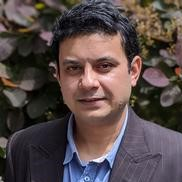Urban Regeneration: Challenges and Opportunities for the Landscape
A special issue of Land (ISSN 2073-445X). This special issue belongs to the section "Urban Contexts and Urban-Rural Interactions".
Deadline for manuscript submissions: 10 June 2024 | Viewed by 5581
Special Issue Editors
Interests: urban and territorial planning; strategic plan; urban regeneration; transportation and port infrastructure policies; climate adaptation plans and ecosystem services
Interests: urban and territorial planning; urban regeneration; public space and cultural heritage; public city and urban well-being; territorial government tools and policies; local plan and ecological transition
Special Issues, Collections and Topics in MDPI journals
Interests: digital twins; transformational land use and smart cities; resilient planning; climate challenges and environmental studies
Special Issues, Collections and Topics in MDPI journals
Interests: urban regeneration; environment change and planning; land and natural resource planning; strategic planning
Interests: urban and territorial planning; urban regeneration; public spaces and cultural heritage; climate-proof planning; local plan and urban resilience
Special Issues, Collections and Topics in MDPI journals
Interests: urban, territorial and landscape planning; landscape architecture; cultural and natural resources; urban regeneration; green and public spaces; land use, land take and ecosystem services
Special Issue Information
Dear Colleagues,
Numerous aspects come into play when addressing the issues of urban regeneration and various interventions are necessary to make cities resilient and ready to respond to environmental, economic, and social challenges. Resilience is understood as a "transversal condition" in the reorganization of a city, as the ability to deal with adverse events and externalities is induced by programmatic choices that will significantly change the reference structures and scenarios.
The complexity of the new urban scenarios is reflected in the increased difficulty both of understanding and describing the connotations of the contemporary city and of thinking of new policies capable of capturing the signals of change and managing various aspects.
The city was almost always saturated and not able to update the range of services and the offer of public spaces in the past, which is something that has changed in recent times. Above all, cities that show a historical delay in the adaptation of public spaces, services, and collective equipment are unprepared at present because they are unable to keep up with the speed of change. It is essential to recognize the changing demand for public spaces, which corresponds to the evolution of living models, to analyze the potential of the growing diffusion of digital technology and the availability of local spaces in the social transition towards the future city. Consequently, this will enable an investigation on how the development of new digital media spaces influences design.
The Special Issue focuses on welfare tools, the supply of services and mobility, the landscape standard, the environment, the restoration of the landscape, historic architecture, and cultural heritage. The enhancement of the landscape as an opportunity to regenerate cities.
How important is space in the age of advanced technology and what are the expected requirements of its users in terms of quality, shape, size, and function?
Are one function and one type of user enough? Is the traditional organization of spaces still feasible, and what are the uses and symbols? Above all, is the space residual (what remains of the physical commitment of roads, public buildings, and private spaces) "public" or is it an urban connective that both welds and cuts through the city and places demands on it?
We now turn our attention away from the undifferentiated demand for basic services and towards the increasingly diversified almost individual requests, the hyper-technologies.
Measures and policies to activate city modernization processes can be implemented through the urban regeneration interventions envisaged by the new European programming
In the transition towards the era of prevailing technology, the era of the smart city, urban public spaces and services must renew themselves by looking at the challenges that the contemporary world poses and that the future demands by developing proactive performing, and intelligent cities. At the same time, the city must be resilient.
Therefore, the cities in which we live today must renew themselves and face the complexity of the issues that arise by the fact that they are "contemporary" cities, cities of change. However, there exists a structural gap: the city is unable to follow the "times" and the speed of the social and physical transformations of the city itself.
In the absence of a punctual and adequate design response, the city undergoes planning inertia, the lack of adequate redevelopment interventions, and the rapid extension of the residential, commercial, industrial, and touristic fabric. Cities and territories suffer and experience dilemmas and profound transformations: segregation, immigration, integration, the density and heterogeneity of the urban settlement, the transformations of the use of time and space of communities and cities, urbanization and sprawl, mobility and new populations in transit, being perpetually in crisis, the environmental paradigm, the new information and communication technologies, and the effect of not being a city.
This call to transform the city will open a discussion on the current issues that animate the scientific debate and the urban/territorial policy agenda.
The idea of developing a Special Issue arose from a variety of issues addressed in the context of the debate on urban regeneration and its relationship to territory, landscape, and current and future transformations.
The topic has in fact solicited points of reflection and in-depth analysis in numerous contexts, welcoming interesting multidisciplinary contributions from teachers and PhD students, which can be studied in depth and published because of their scientific contributions to the topics.
The goal of this Special Issue is to collect papers (original research articles and review papers) that provide insights into the advances in the models of urban regeneration and innovative approaches for resilience for the enhancement of the landscape as an opportunity to regenerate cities.
This Special Issue will welcome manuscripts that link to the following themes:
- PNRR and urban regeneration best practices for landscape enhancement;
- Public spaces and urban landscape;
- Welfare in urban regeneration; public urban policy for identity and landscape;
- Accessibility and sustainable mobility, prerequisites for enhancing the urban landscape as it changes;
- Cultural heritage and landscape;
- Architecture and new social relations and the landscape of urban connections;
- Not only an ecological transition: the challenges of the landscape;
- Landscape and urban planning for climate-proofing
- Landscape development amongst competing land uses;
- Sustainable and inclusive design of open spaces;
- Multifunctional role of green infrastructures in the landscape urban regeneration;
- The role ecosystem services play in landscape planning;
- Landscape identity and community involvement.
We look forward to receiving your original research articles and reviews.
Prof. Dr. Francesca Moraci
Prof. Dr. Laura Ricci
Prof. Dr. Kh Md Nahiduzzaman
Prof. Dr. Celestina Fazia
Prof. Dr. Carmela Mariano
Dr. Francesca Perrone
Guest Editors
Manuscript Submission Information
Manuscripts should be submitted online at www.mdpi.com by registering and logging in to this website. Once you are registered, click here to go to the submission form. Manuscripts can be submitted until the deadline. All submissions that pass pre-check are peer-reviewed. Accepted papers will be published continuously in the journal (as soon as accepted) and will be listed together on the special issue website. Research articles, review articles as well as short communications are invited. For planned papers, a title and short abstract (about 100 words) can be sent to the Editorial Office for announcement on this website.
Submitted manuscripts should not have been published previously, nor be under consideration for publication elsewhere (except conference proceedings papers). All manuscripts are thoroughly refereed through a single-blind peer-review process. A guide for authors and other relevant information for submission of manuscripts is available on the Instructions for Authors page. Land is an international peer-reviewed open access monthly journal published by MDPI.
Please visit the Instructions for Authors page before submitting a manuscript. The Article Processing Charge (APC) for publication in this open access journal is 2600 CHF (Swiss Francs). Submitted papers should be well formatted and use good English. Authors may use MDPI's English editing service prior to publication or during author revisions.
Keywords
- urban regeneration for landscape, best practices
- public spaces and urban landscape, social animation
- cultural heritage and landscape
- landscape, architecture, and new social relations
- land, landscapes, risk management
- landscape enhancement
- the role ecosystem services play in landscape planning
- energy and the environment: the challenges of the landscape
- landscape and urban planning for climate-proofing
- landscape development
- management and competing land uses
- sustainable and inclusive design of open spaces
- role of green infrastructures
- landscape urban regeneration
- ecosystem services in landscape planning
- landscape identity and community involvement
- welfare in urban regeneration, public urban policy for identity and landscape
- accessibility and sustainable mobility, prerequisites for enhancing the urban landscape as it changes.
Planned Papers
The below list represents only planned manuscripts. Some of these manuscripts have not been received by the Editorial Office yet. Papers submitted to MDPI journals are subject to peer-review.
Title: Landscape implications from urban regeneration policies
Author: Silva
Highlights: Urban regeneration models in fragile European economies have a strong impact on urban landscapes.
The misuse of technical definitions needs to be addressed, to contribute to a better qualified landscape.
Although many of the urban policies are conducted under the EU umbrella, its broader scope shrinks as it gets to site interventions, losing the broader impact in terms of landscape.
Title: Counteract soil consumption through ecosystem services and landscape restoration for an efficient urban regeneration
Author: Fazia
Highlights: soil consumption and ecosystem services;
landscape restoration for an efficient urban regeneration;
case study international;
conclusions.










